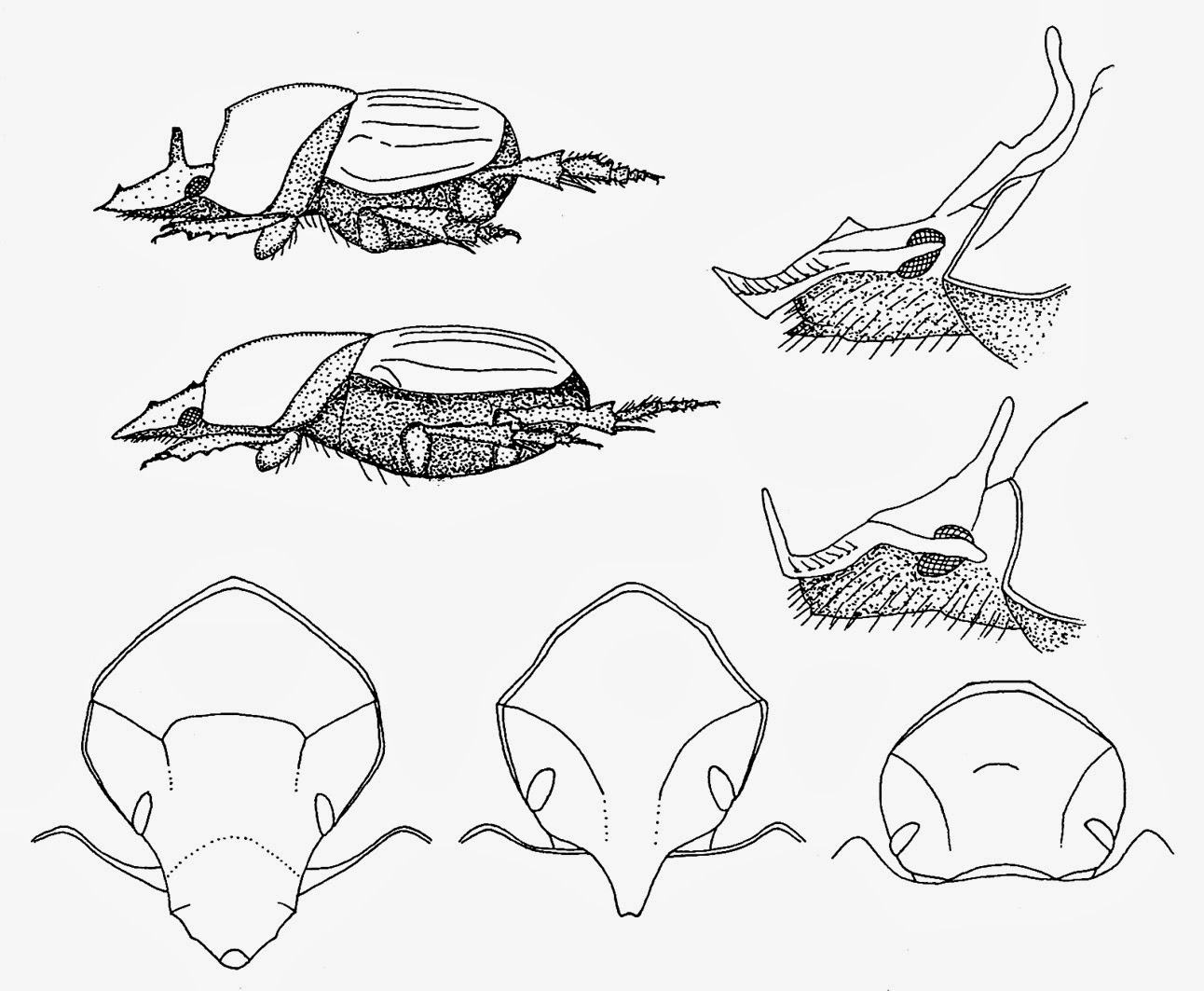G. it. Ent., 9 (49): 159-261
May 2001
El género Onthophagus (Coleoptera: Scarabaeidae)
en Costa Rica
por
BERT KOHLMANN y ANGEL SOLÍS
Abstract - The genus Onthophagus (Coleoptera: Scarabaeidae) in Costa Rica - This paper is the result of the study of the genus Onthophagus Latreille (Coleoptera;: Scarabaeidae) in Costa Rica. Thirty seven species are reported, ten of them are new and a new synonym is established. The previously known species are: O. acuminatus Harold, O. andersoni Howden & Gill, O. anthracinus Harold, O. atriglabrus Howden & Gill, O. atrosericeus Boucomont, O. batesi Howden & Cartwright, O. championi Bates, O. chryses Bates, O. coscineus Bates, O. crinitus Harold, O. cyanellus Bates, O. dicranius Bates, O. gazellinus Bates, O. hoepfneri Harold, O. incensus Say, O. landolti Harold, O. marginicollis Harold, O. micropterus Zunino & Halffter, O. mirabilis Bates, O. nyctopus Bates, O. praecellens Bates, O. propraecellens Howden & Gill, O. quetzalis Howden & Gill, O. sharpi Harold, O. solisi Howden & Gill, O. stockwelli Howden & Young and O. tapirus Sharp. The new species are: O. coraceoumbrosus, O. cryptodicranius, O. genuinus, O. grataehelenae, O. inediapterus, O. limonensis, O. nemorivagus, O. nubilus, O. singulariformis, O. viridivinosus. The following synonymy is established: O. mesoamericanus Zunino & Halffter, 1988 = O. cyanellus Bates, 1887. The female of O. micropterus is described for the first time. Line drawings with morphological characteristics of importance are included for every species, as well as colour drawings of the dorsal habitus of all new species and a few selected ones, as well as distribution maps. An identification key is also presented.






















